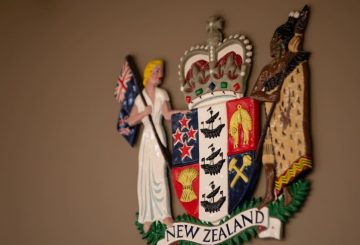Di pinggiran Clayton Melbourne, Synchrotron Australia menonjol dengan desain melingkarnya yang besar. Tujuan utamanya adalah untuk menghasilkan cahaya yang digunakan untuk penelitian ilmiah. Sinkrotron adalah jenis akselerator partikel yang menggerakkan elektron dengan kecepatan sangat tinggi di ruang vakum.
Prosesnya dimulai dengan pistol elektron yang menghasilkan elektron, yang kemudian memasuki akselerator linier untuk mendapatkan energi, mencapai kecepatan cahaya mendekati. Selanjutnya, elektron masuk ke cincin booster, menyelesaikan lebih dari satu juta putaran hanya dalam setengah detik, mendapatkan energi dengan setiap putaran. Setelah itu, elektron bergerak ke cincin penyimpanan, di mana mereka menekuk arah menggunakan magnet besar, melepaskan energi sebagai cahaya.
Dr. Emily Finch, yang mengelola garis sinar mikroskop, menyebut sinkrotron sebagai “donat sains.” Cahaya yang dihasilkan disaring dan diarahkan ke garis sinar, di mana para peneliti dapat menggunakannya untuk berbagai penelitian. Dr. Helen Brand, manajer operasi sains, mendorong orang untuk bertanya tentang topik penelitian, menyoroti ruang lingkup luas studi yang dilakukan di sana.
Koridor fasilitas dipenuhi dengan poster yang menampilkan berbagai eksperimen. Misalnya, satu penelitian mengungkapkan lukisan Degas yang tersembunyi, dan tim Selandia Baru menganalisis elemen pada lobster batu berduri.
Saat ini, ada 14 garis sinar aktif yang sebagian besar menggunakan sinar x-ray, masing-masing berfokus pada pertanyaan penelitian tertentu. Satu garis sinar berfokus pada difraksi sinar-X untuk memahami struktur molekul.
Ben Krinkel, seorang mahasiswa PhD dari University of Auckland, menggunakan beamline kristalografi sinar-X makromolekul untuk mempelajari kemungkinan obat kanker, menguji hampir 100 sampel kristal untuk menentukan cara kerja obat tersebut. Rekannya, Shayhan Chunkath, sedang meneliti fragmen protein kecil dengan kemungkinan efek antibakteri dan berharap untuk memvisualisasikan strukturnya.
Untuk memastikan keamanan, para peneliti mengontrol tes x-ray dari jarak jauh, karena sinar-X dapat berbahaya. Peneliti Selandia Baru dapat mengakses sinkrotron melalui perjanjian kerja sama yang ditetapkan pada tahun 2017, memungkinkan mereka untuk mengajukan waktu penelitian dan hibah perjalanan.
Dalam setahun terakhir, telah ada 113 kunjungan oleh tim Selandia Baru ke sinkrotron, menampilkan beragam upaya penelitian. Rincian lebih lanjut akan menyusul minggu depan. Pelaporan cerita ini didukung oleh New Zealand Synchrotron Group Ltd.





























































